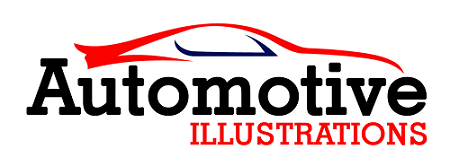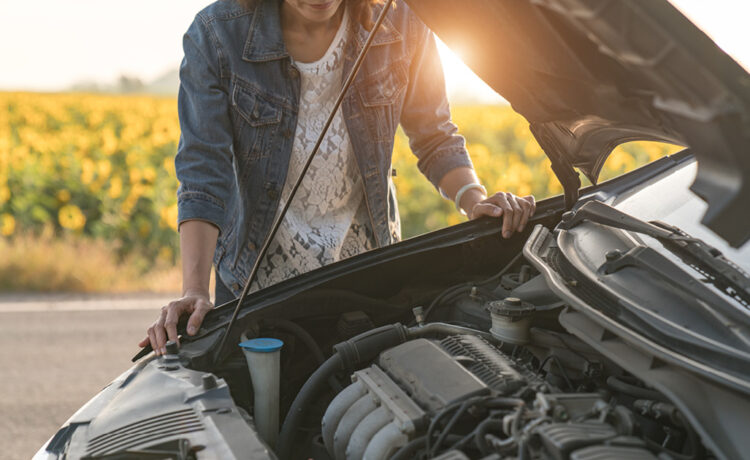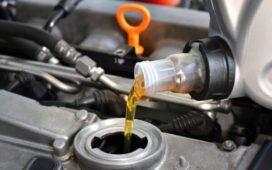We’ve all enjoyed those peaceful drives, with our favorite tunes playing, believing the journey will be smooth. But what if an unexpected rock causes an abrupt halt in your serene drive? The difference between frustration and a quick resolution is knowledge. Dive into this guide to discover crucial tips on handling sudden roadside emergencies. Plus, gain insights on potential costs that might surprise you, such as repainting after an unexpected scrape. So, if you’ve ever found yourself puzzled over a damaged rear bumper or contemplated the cost to repaint your car, you’re in the right place. Let’s equip you for those unpredictable road moments.
Essential Roadside Emergency Supplies
Being prepared for the unexpected begins with keeping some essential items in your vehicle. Here are some must-haves:
- First Aid Kit: This should include items such as bandages, adhesive tape, antiseptic wipes, scissors, tweezers, and sterile gauze pads. It’s essential for treating minor injuries that may occur during a roadside emergency. Be sure to periodically check and restock any items that have been used or have expired.
- Flashlight: A good quality flashlight with extra batteries is crucial for providing illumination during nighttime emergencies. It helps you inspect your vehicle, find your way around, and make yourself visible to others.
- Jumper Cables:These are essential if your vehicle’s battery dies. Jumper cables allow you to jump-start your vehicle using the battery from another vehicle. Make sure you know how to use them safely.
- Reflective Triangles and Vest: Reflective triangles are placed behind your vehicle to warn approaching drivers of your presence, especially in low-light or poor visibility conditions. A reflective vest should be worn to make yourself visible while outside the vehicle, reducing the risk of accidents.
- Basic Tools: A small toolkit with a wrench, screwdriver, and pliers can be invaluable for minor repairs or adjustments. These tools can help you tighten loose parts, address minor issues, or make temporary fixes to get your vehicle moving again.
- Tire Repair Kit and Pump: A tire repair kit typically includes tools to plug small punctures and reinflate the tire. It’s handy for temporarily fixing a flat tire and getting back on the road. Ensure that your spare tire is in good condition and properly inflated as well.
- Non-perishable Snacks and Water: Having some non-perishable snacks like granola bars, nuts, or dried fruits, along with bottled water, is essential if you find yourself stranded for an extended period. These supplies can help keep you nourished and hydrated until help arrives.If you’re stranded for a while.
Preparing Your Vehicle
Regular maintenance can help prevent many of the common issues drivers face on the road. Ensure your tires are in good condition, your engine oil level is adequate, and all the lights are working perfectly. Furthermore, keep a close eye on any visible parts like the rear bumper. Damage in such areas, although seemingly insignificant, can escalate costs if not addressed immediately.
Handling Common Roadside Emergencies
Even with preparation, emergencies can happen. Here’s how to handle some common ones:
- Flat Tire – Pull over safely, turn on your hazard lights, and replace the flat tire with your spare.
- Overheating – Turn off the AC and pull over. Wait for the engine to cool before checking the coolant level.
- Empty Gas Tank – Safely park your vehicle off the road, turn on your hazard lights, and either call for assistance or walk to the nearest gas station.
- Rear Bumper Damage – If it’s minor, take a picture for insurance purposes and continue driving if safe. If the damage is severe, call for assistance. Always consider the long-term cost to repaint a car when deciding on immediate solutions.
Staying Safe While Waiting for Help
If you need to pull over:
Find a safe spot away from traffic.
When you need to pull over due to a vehicle issue or emergency, the first step is to find a safe spot away from traffic. This means pulling your vehicle as far to the right as possible, ensuring it is completely off the roadway. Look for a wide shoulder or a designated parking area, if available. Avoid stopping on curves, blind spots, or other areas where other drivers might not see you in time to avoid a collision. If you’re on a highway, try to make it to an exit or rest area if possible, as this can be much safer than stopping on the shoulder.
Turn on your hazard lights, especially in low visibility conditions.
After safely pulling over, immediately activate your hazard lights, also known as flashers or emergency lights. Hazard lights serve as a visual warning to other drivers, especially in low visibility conditions such as rain, fog, or darkness. Keeping your hazard lights on helps make your stationary vehicle more visible and reduces the risk of other vehicles colliding with yours. Remember to keep your hazard lights on until help arrives.
Set up your reflective triangles behind your vehicle.
If your vehicle is equipped with reflective warning triangles, it’s essential to use them to enhance your visibility to oncoming traffic. Place the first triangle approximately 10-20 feet behind your vehicle, the second triangle about 100 feet behind, and the third one around 200 feet behind, forming a warning triangle pattern. Follow the manufacturer’s instructions for proper placement, as these reflective triangles help alert other drivers to your presence and the potential hazard on the road.
Stay inside your vehicle if it’s safe, especially on busy highways.
When tYour safety is paramount, especially on busy highways or in adverse weather conditions. In many cases, the safest option is to remain inside your vehicle. Keep your seatbelt fastened and doors locked to protect yourself from potential collisions. You can roll down the window slightly to communicate with anyone who stops to offer assistance or if law enforcement arrives. If you feel safer outside the vehicle due to specific circumstances, exit on the side away from traffic and stand as far from the roadway as possible.
Ask for Professional Help
Not all emergencies can be managed on the spot. If you’re unsure about the extent of damage, especially when considering how much to paint a car or the implications of rear bumper damage, it’s best to consult a professional. For more in-depth insights on this topic, check out this article on rear bumper damage and another on car paint repair cost.
Conclusion
Roadside emergencies are inevitable, but with the right preparation and knowledge, you can navigate them with confidence. Always prioritize safety, and when in doubt, seek professional guidance. Remember, being informed about potential costs, whether it’s for fixing a damaged rear bumper or determining how much to paint a car, can help you make informed decisions during these unpredictable situations. Safe travels!







